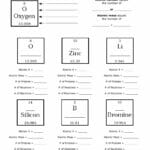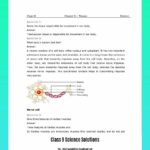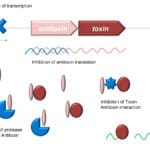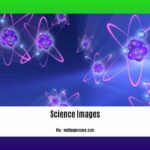Decoding Subatomic Particles in Crossword Puzzles
Crossword puzzles often feature clues related to the fascinating world of subatomic particles. These clues can be challenging, but with a bit of background knowledge, you can crack them. This guide provides answers, synonyms, and scientific explanations to help you master these intriguing puzzles. Whether you’re a seasoned crossword solver or just starting out, this resource will equip you to unravel the mysteries of these tiny particles.
Common Subatomic Particle Crossword Answers
Here’s a table of common subatomic particles frequently appearing in crossword puzzles:
| Answer | Letter Count | Definition |
|---|---|---|
| PION | 4 | A type of meson involved in the strong nuclear force that binds atomic nuclei. |
| MESON | 5 | A hadron composed of a quark and an antiquark. |
| MUON | 4 | A heavier, less stable lepton, similar to the electron. |
| PROTON | 6 | A positively charged particle in the atomic nucleus, defining the element. |
| NEUTRON | 7 | A neutral particle in the atomic nucleus, contributing to atomic mass. |
| QUARK | 5 | Fundamental building blocks of matter, combining to form hadrons. |
| LEPTON | 6 | A fundamental particle that doesn’t experience the strong nuclear force (e.g., electrons, muons, neutrinos). |
| BOSON | 5 | Force-carrying particles, mediating interactions between other particles (e.g., photons, gluons). |
| ELECTRON | 8 | Negatively charged particles orbiting the nucleus, involved in chemical bonding and electricity. |
| NEUTRINO | 8 | An extremely light, elusive lepton. |
| GLUON | 5 | Bosons that “glue” quarks together within hadrons. |
| PHOTON | 6 | The particle of light, a type of boson. |
Strategies for Solving Subatomic Particle Clues
Solving subatomic particle clues requires a bit of detective work. Here are some helpful strategies:
- Abbreviation Awareness: Look for abbreviations (e.g., “p” for proton).
- Synonym Search: Consider synonyms (e.g., “negative particle” for electron).
- Related Concepts: Think about related fields like quantum physics or nuclear physics. A clue mentioning “decay” might suggest a particle with a short lifespan.
- Clue Construction: Pay close attention to the wording. Does the clue suggest a plural? A specific property like charge?
- Cross-Checking: Use letters from intersecting clues to narrow down possibilities.
Key Subatomic Particles: A Closer Look
Bosons: The Force Carriers: These particles mediate fundamental forces. Photons carry the electromagnetic force (light and electricity), while gluons carry the strong force binding quarks within hadrons. Ongoing research explores the Higgs boson, thought to give particles mass.
Quarks: The Building Blocks of Hadrons: Six “flavors” of quarks (up, down, charm, strange, top, bottom) combine to form hadrons like protons and neutrons, each composed of three quarks. Quarks possess fractional electric charges.
Leptons: The Independent Particles: Leptons, such as electrons, muons, and taus, don’t experience the strong force. Neutrinos, nearly massless and abundant, are also leptons and are subjects of intense research.
Embracing the Uncertainty in Subatomic Physics
The world of subatomic particles is complex and constantly evolving. New discoveries are frequent, and some theories are still debated. The study of subatomic particles is an ongoing journey of exploration.
What is a word for a subatomic particle?
The term “subatomic particle” itself describes any particle smaller than an atom. These particles are the fundamental building blocks of all matter, from the smallest atoms to the largest stars. They govern the universe’s forces and interactions. When crossword puzzles use clues related to these particles, understanding the terminology is key. Knowing the right words is like having a decoder ring for the quantum realm.
Subatomic particles are dynamic, constantly interacting with each other and exhibiting unique behaviors. They are the driving force behind the fundamental forces of nature, including gravity, electromagnetism, and the strong and weak nuclear forces.
There’s a vast diversity among subatomic particles. Some, like protons, neutrons, and electrons, are common and essential for understanding basic atomic structure. Others, such as quarks, leptons, bosons, and neutrinos, are more exotic and play distinct roles in the cosmic ballet. Scientists use powerful tools like particle accelerators, which are essentially giant racetracks that accelerate particles to near light speed and smash them together, to study these elusive particles. Enormous detectors then capture the fleeting remnants of these collisions, offering glimpses into the subatomic world.
This research is ongoing and constantly evolving. Our understanding of subatomic particles is not set in stone; it’s a dynamic and ever-changing field. What we know today might be revised tomorrow as new evidence emerges. Some experts suggest there may be undiscovered particles, while others believe our current models are incomplete, leaving much to learn about these particles’ interactions and behaviors.
What are the names of the subatomic particles?
Subatomic particles are the fundamental constituents of matter. Atoms, often mistakenly considered the smallest units of matter, are actually composed of these even smaller particles. Think of them as the ultimate LEGO bricks of the universe. The most common subatomic particles are:
- Protons: These positively charged particles reside in the atom’s nucleus and determine the element. The number of protons is like an atom’s ID card.
- Neutrons: Also located in the nucleus, neutrons have no charge and contribute to the atom’s mass. They’re like adding weight without altering the atom’s identity.
- Electrons: These negatively charged particles orbit the nucleus and are significantly lighter than protons and neutrons. They play a crucial role in chemical reactions and bonding.
Beyond these fundamental particles, a whole array of other subatomic particles exists, each with unique characteristics and roles:
- Quarks: Think of quarks as the building blocks of protons and neutrons. They come in six “flavors”: up, down, charm, strange, top, and bottom. Protons and neutrons each consist of three quarks.
- Leptons: These are fundamental particles that are not composed of smaller constituents. Electrons are a type of lepton. Neutrinos, incredibly light and weakly interacting particles, are also leptons.
- Mesons: Composed of a quark and an antiquark, mesons like pions play a role in the strong nuclear force that holds the nucleus together.
- Bosons: These particles act as force carriers. Photons carry the electromagnetic force (light), while gluons mediate the strong nuclear force that binds quarks within protons and neutrons.
The study of subatomic particles has led to significant advancements, including medical technologies like PET scans (using positrons, the antimatter counterpart of electrons), nuclear power (harnessing energy from nuclear fission), and ongoing research at facilities like the Large Hadron Collider.
Our understanding of subatomic particles is constantly evolving. Current theories suggest the possibility of undiscovered particles, perhaps even those composing dark matter, a mysterious substance making up a large portion of the universe. Ongoing research continues to push the boundaries of scientific knowledge.
What is a subatomic particle that starts with P?
Several subatomic particles or related concepts begin with the letter “P.” Here’s a breakdown:
Proton: This fundamental building block of matter resides in the atomic nucleus and carries a positive charge, attracting the negatively charged electrons. Research continues to explore properties like proton spin and interactions with other particles. Learn more about the complex structures that house protons through resources like our sheep brain dissection labeled.
Pion (Pi Meson): Pions, unlike protons, are composed of a quark and an antiquark. They exist in positive, negative, and neutral forms and play a vital role in mediating the strong nuclear force that holds the atomic nucleus together.
Positron: This is the antiparticle of the electron, possessing the same mass but a positive charge. Although less common than electrons, positrons are important in fields like medical imaging (PET scans) and materials science.
Proton-Rich Isotopes: These isotopes have more protons than neutrons, making them unstable and prone to radioactive decay. They are valuable in nuclear medicine and research on radioactivity and nuclear forces. Explore related concepts in organ systems with resources like our guide on sheep’s pluck.
| Particle/Concept | Description | Charge | Role |
|---|---|---|---|
| Proton | Fundamental building block, in the nucleus | Positive | Basis of atoms |
| Pion (Pi Meson) | Quark and antiquark pair | Positive, Negative, or Neutral | Mediates the strong force |
| Positron (Antielectron) | Antiparticle of the electron | Positive | Medical imaging, materials science |
| Proton-rich Isotopes | More protons than neutrons | Varies | Nuclear medicine, research |
Our knowledge of subatomic particles is continually advancing. New discoveries and theories are always being developed, emphasizing the dynamic and exciting nature of particle physics. This research is crucial for understanding the universe’s fundamental nature, and the future holds the promise of amazing discoveries.
- Georgia Platform: A Southern Strategy, 1850s - March 31, 2025
- How many weeks is 40 days: Quick Conversion Guide for Accurate Results - March 31, 2025
- How many feet is 300 meters? 984 Feet: Understand Length Conversions Easily - March 31, 2025

















1 thought on “Subatomic Particle Crossword Clues: Solutions, Synonyms, and Expert Explanations”
Comments are closed.